Spaceflight has long been a common theme in both science fiction and popular science literature. At first glance, this happened relatively recently — a hundred or so years ago. However, in fact, this topic came to literature so long ago that its origins have to be sought in folklore.

Who was the first to describe a flight in space?
March 3 is World Writers’ Day. People have written many fiction and popular science books about space and spaceflight. But if we ask ourselves who was the first author in world literature to describe a journey beyond the Earth, we will find some interesting things.
Because neither Jules Verne nor Konstantin Tsilolkowsky, who are often credited with the priority in this regard, were actually the first to describe such a journey. For stories about what might now be considered space travel can be found even in ancient legends. The most famous example here is The Tale of the Bamboo Cutter, a Japanese folk tale written down by an unknown author in the 10th century AD.
The story centers on a young lady named Kaguya, who has a mysterious origin and turns out to be a princess whose palace is located on the Moon. At some point, a flying chariot arrives to pick her up, and she returns home.

Kaguya returns to the Moon
Of course, all of this has purely fairy tale attributes, but the fact that it is essentially a journey from the Earth to the Moon is hard to miss. It was in honor of the heroine of this fairy tale that the Kaguya satellite, launched into lunar orbit in 2007, was named. However, there are even earlier examples of stories about traveling to the Moon in world literature.
Works of ancient authors
The tale of Kaguya was not the first. As early as the second century AD, ancient authors created two examples of fantasy literature featuring a trip to the Moon. These are Antony Diogenes’ Incredible Adventures on the Other Side of the Thule and Lucian’s True Story.
However, in the first of them, the flight to the natural satellite of our planet does not take place as such. The heroes simply travel for a long time to different real and fictional countries that the inhabitants of the Mediterranean knew about at that time and experience a lot of incredible adventures. And then they walk for a long, long time and eventually end up on the Moon.
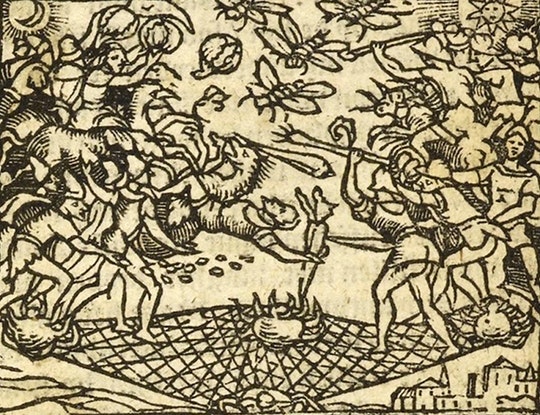
Illustration to the work of Lucian. Source: publicdomainreview.org
The second story is much more like modern space fiction. Lucian also begins his story with adventures on Earth. But at some point, the characters are caught in a whirlwind, and they fly to the Moon. There is a kingdom there that is at war with the people who inhabit the Sun. So it was in this work that alien life and war in space were first described.
Space travel in the seventeenth century
After the tales of Lucian and Antony Diogenes, the theme of space travel disappears from European literature for a long time. However, in the seventeenth century, around the time of the Cossack uprisings in Ukraine, a number of works describing space flight were created in Europe. The first to raise this topic was the prominent astronomer Johannes Kepler, known for discovering the laws of planetary motion.
The work entitled “The Dream” was written in 1608 but published only in 1634, after the scientist’s death. It tells the story of an Icelandic traveler named Drukotus, who travels extensively on the seas of northern Europe and learns astronomy from scientists during his travels. Upon returning home, he learns from his mother that she is a sorceress who can communicate with demons, and they can transport a person to any place on Earth.
Then it turns out that the journey to the Moon is possible as well. Although all of this happens through purely fairy tale means, Kepler reports several things about the space journey that are entirely consistent with scientific ideas about space. First, he first comes up with the idea that space is cold. Of course, the vacuum itself has no temperature, but in general, most of the objects that are farther away from the Sun than the Earth are indeed colder than it.
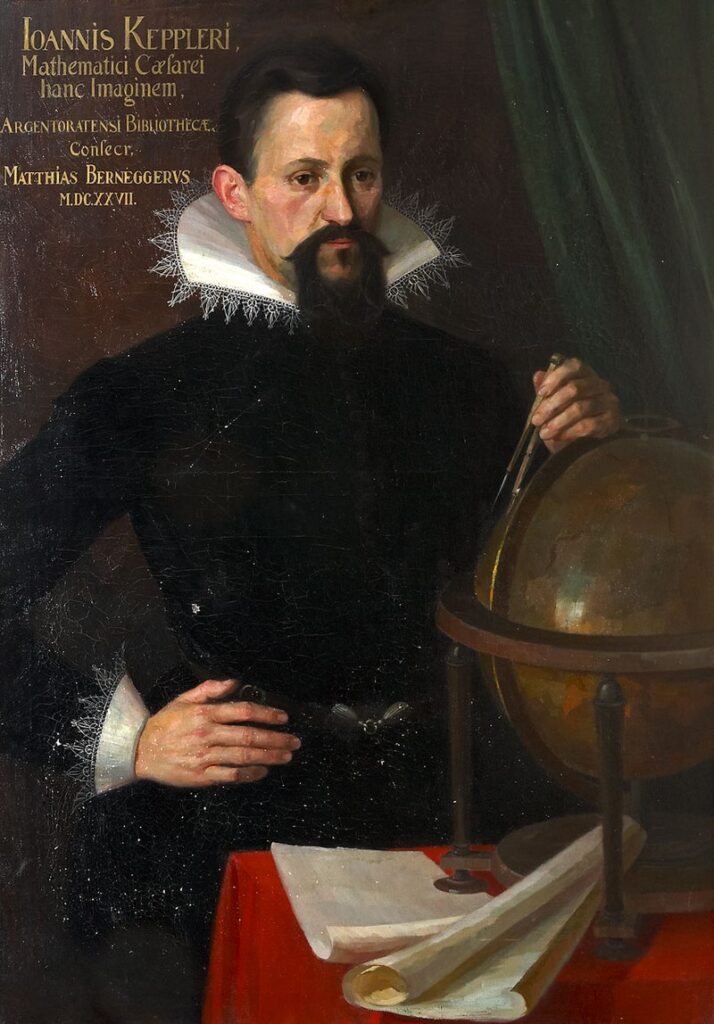
Johannes Kepler. Source: Wikipedia
The second thing the author mentions is the lack of oxygen. While being pushed to the Moon by the demons, the heroes have to breathe through wet sponges. From the point of view of modern science, this sounds extremely naive, but it’s worth remembering that in Kepler’s time, no one had any idea not only about the vacuum but also about the chemical composition of the atmosphere.
Finally, the third thing that Kepler mentions is the need not only to accelerate during the flight to the Moon, but also to slow down in the final part of the trajectory. This is exactly how all spacecraft perform interplanetary flights.
In the same year, 1634, Anastasio Pantaleon de Ribera’s book Satirical Journey to the Moon was published, where the hero is transported to a city on the surface of our natural satellite. This work is primarily satirical. This was generally typical of the science fiction literature of the time — to show the negative features of real European societies on the example of a country located somewhere incredibly far away.
Although there was another variant. Utopian states where people live under fair laws based on wisdom and kindness were transferred to the Moon and similar inaccessible places. An example of this is the novel Man on the Moon by the English priest and writer Francis Godwin. In terms of its general structure, this work resembles Lucian’s True Story. First and foremost, it is a story about the protagonist’s travels to different countries on Earth. However, in the end, he invents a harness that allows him to fly on wild swans. One day, they take him to the Moon, where he meets the locals.
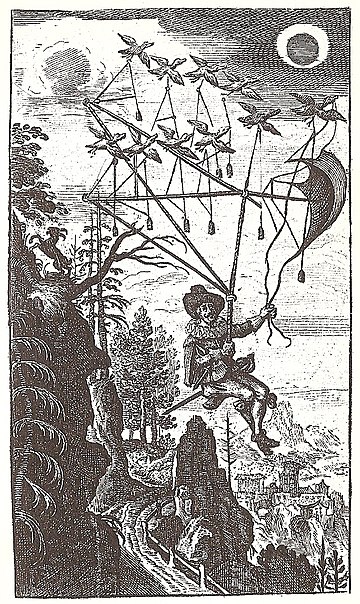
Cyrano de Bergerac
But the most outstanding example of space adventures in the literature of the seventeenth century is Cyrano de Bergerac’s novel Comic History of the States and Empires of the Moon, published in 1657. It is, again, primarily a satirical and philosophical work, but it contains a number of ideas that allow us to consider it not just as fiction, but as science fiction.
In particular, the protagonist mentions that all matter in the Universe is born inside stars, and when the Sun runs out of “fuel”, it will swallow up all the planets. Most likely, Cyrano was just fantasising, but his ideas are surprisingly in tune with what modern science says about the evolution of the stars.
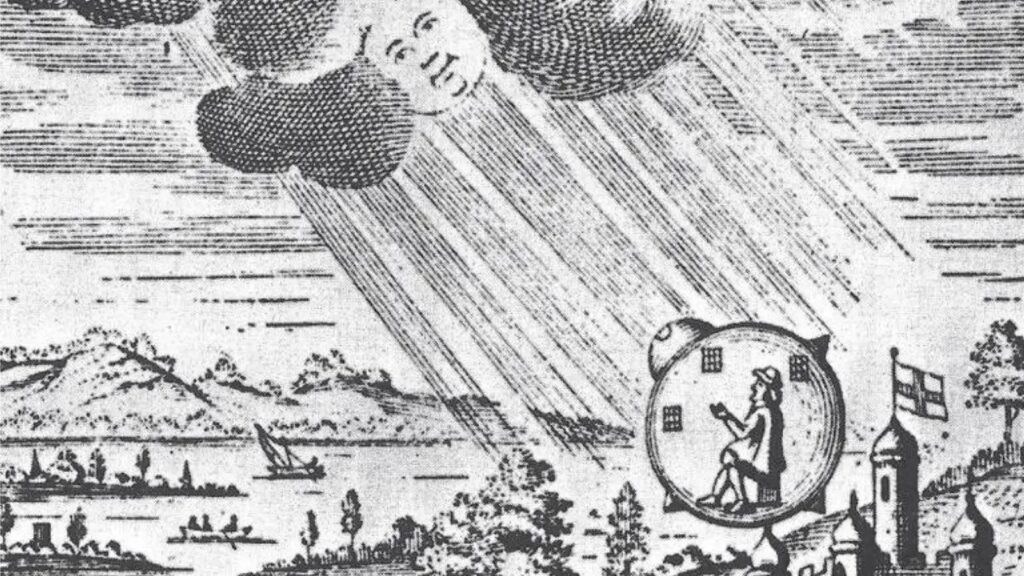
Illustration to the work of Cyrano de Bergerac. Source: gizmodo.com
Cyrano de Bergerac was also the first author to depict a hero flying to the moon in a vehicle driven by physical forces and chemical processes, rather than by natural phenomena, animals, or supernatural forces. In fact, he is the author of the first spacecraft in science fiction.
Eighteenth-century science fiction
The history of space travel in eighteenth-century literature was continued by Daniel Defoe. In 1705, the author of Robinson Crusoe published his novel The Consolidator. Again, it is a political satire disguised as an adventure novel. This time, the hero travels to China, where he learns that there are intelligent beings on the Moon, and sets off to visit them in a flying device drawn by feathered creatures.
In principle, Defoe’s work is basically the same as Godwin and de Bergerac. The only thing worth noting here is the theme of magic glass, which is capable of revealing the hidden and is used by the inhabitants of the Moon to draw political maps of the Earth’s civilisation. This is very similar to the way satellites in Earth orbit are now used to extract geospatial information.
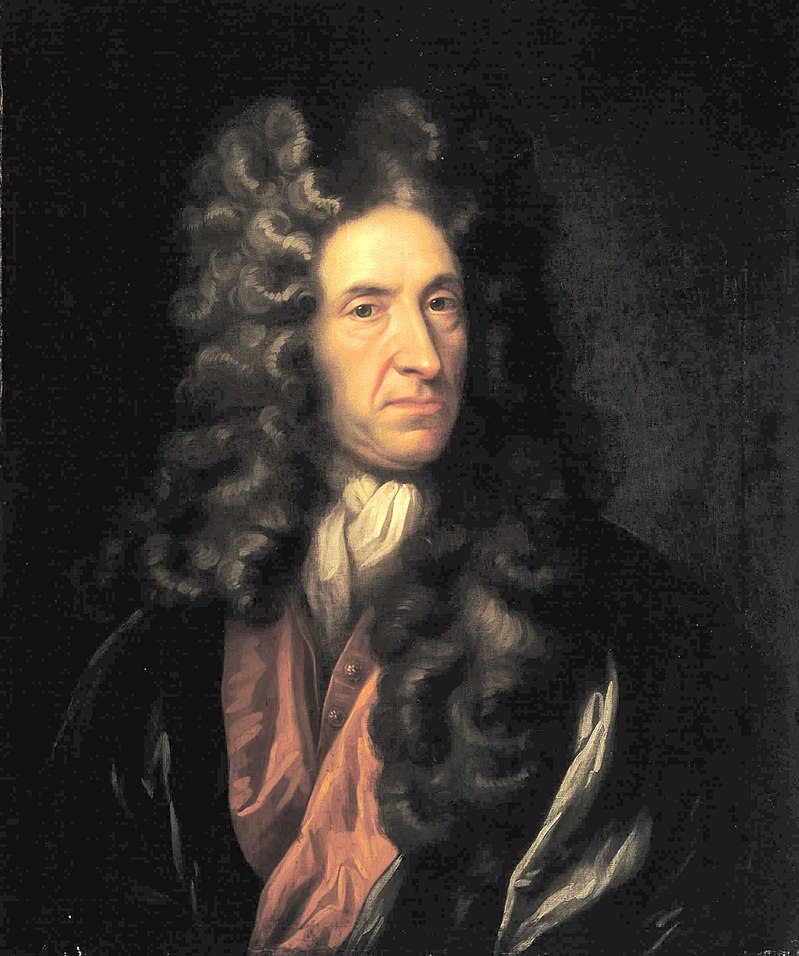
Daniel Defoe. Source: Wikipedia
In 1727, the topic of travelling to the Moon was raised in Samuel Brandt’s Voyage to Cacklogallinia. In general, it continues the tradition of its predecessors. The travelling hero finds himself in a land of intelligent birds, which is easily seen as a satire on English society of the time. Then he flies to our satellite with the help of these birds and has philosophical conversations with the local inhabitants.
In general, eighteenth-century writers addressed the theme of space travel several times. But each time, these were humorous stories that often entered the territory of political or social satire.
Before Jules Verne
Everything began to change with the advent of the nineteenth century. In 1809, the American writer Washington Irvine published a fairly short story called The Men of the Moon (there is a variant of the title The Conquest of the Earth by the Moon). In it, the author mentions for the first time since the Japanese fairy tale about Kaguya that not only can people fly to the Moon, but its inhabitants can also visit us.
In Irwin’s case, they come with far from peaceful intentions. “The Lunatics” have an entire fleet of spaceships, travel around the Earth on flying beasts, and conquer the Earthlings quite quickly because they wear armour that bounces bullets and fire beam weapons.
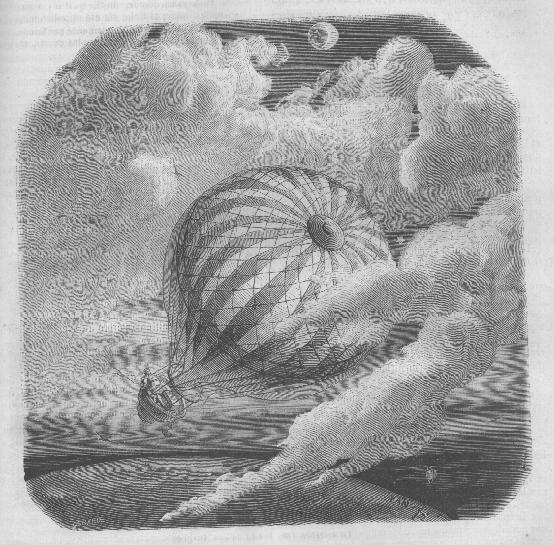
“Lunatics” have no particular reason to dislike humans, but they can easily and reasonably prove that we are savages. In their opinion, this is directly indicated by Earth’s religious and marriage traditions, so conquest is a good thing for us.
All this, of course, is a satire on the colonial policy of European countries, but in fact, Irving is the author of the first ever description of an alien invasion of Earth. And most science fiction authors who write about it still use the same clichés and logic.
In general, in the first half of the nineteenth century, authors continued the old traditions of stories about flights to the Moon, with social satire as their main focus, but gradually they focused more and more on the scientific component.
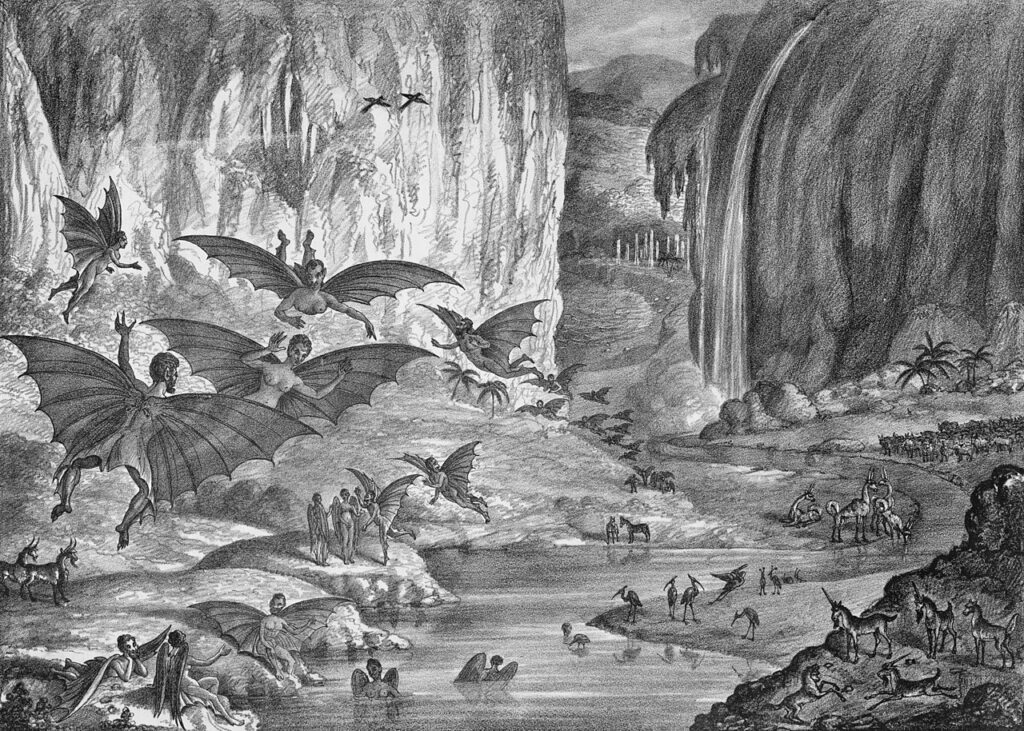
In 1835, the New York newspaper Sun published a series of six articles claiming that the English astronomer John Herschel had seen living creatures and even an entire alien civilisation through a telescope on the surface of the Moon. The story made a lot of noise, but ultimately turned out to be a hoax.
However, it was the story that gave writer Edgar Allan Poe the impetus to create the story The Unparalleled Adventure of one Hans Pfaall. The story tells how one morning a strange balloon lands on the square in Rotterdam and the creature inside hands the mayor a letter.
The letter, as it turns out, is written by Hans Pfaall, who has been building a giant balloon for many years and has gone into debt. In his message, he confesses that he killed his creditors with explosives before the launch, and allegedly flew to the Moon. His journey was successful, but now he asks for forgiveness for his murder.
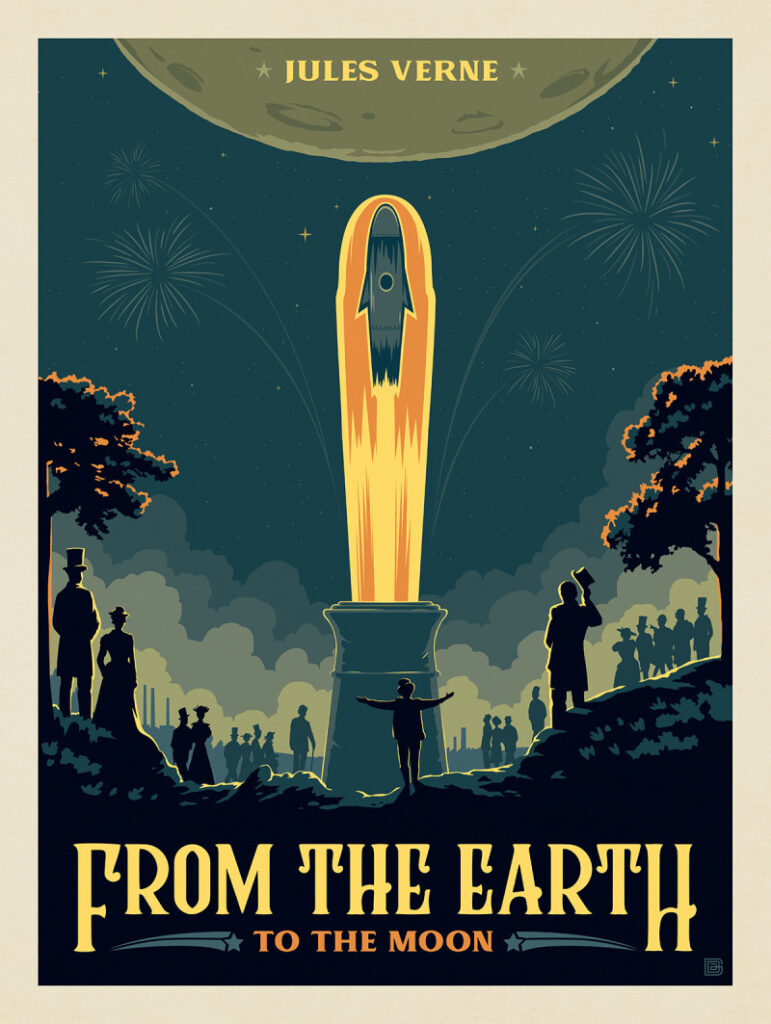
Poe’s story contains absolutely no new ideas about what the Moon is and how to get there. On the contrary, Pfaal’s stories contain a whole bunch of concepts that were already known to be false. The writer specifically cites them so that everyone can see how much outright pseudoscience is involved in all these stories about lunar missions.
In fact, it was Poe who put an end to the tradition of philosophical and satirical space travel and asked himself the question: how can we really get to the Moon? After all, science tells us that getting there is not as easy as authors have been telling us for centuries.
It took another 30 years before Jules Verne tried to answer this question. The technical descriptions in From the Earth to the Moon take up so much space for a reason. The French writer knew that the mere fact of travelling to the nearest celestial body would not surprise readers, but they were sceptical about the possibility of its implementation.
In the end, the French writer managed to at least partially convince the public that various technical devices could indeed help people travel in space, not just in philosophical treatises. The second half of the nineteenth century saw an explosion of science fiction literature, with authors expressing various ideas about how to reach the Moon and the planets. Then some eccentrics began to test these ideas, and some of them managed to build spaceships. But this is a completely different story…

